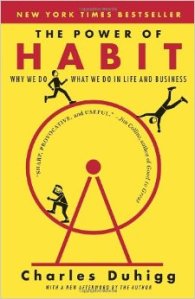Lean In: Women, Work, and the Will to Lead, by Sheryl Sandberg
I don’t know if this is true, but there are those who like Sheryl and those who don’t, and those who fall in the former have read her book, while those who fall in the latter have only read things about her book.
I first read Sheryl’s book in December, and I liked it so much that I just reread it. I think of her as a mentor (Sheryl, if you’re reading this, I know to never ask the “Are you my mentor question?”), and her advice is what prompted me to pull on my big girl undies and ask if I could return to a full-time schedule while working from home after the recent birth of my child. In addition, every time I second guess myself, feel insecure about the work I’ve done, or engage in self-flagellation to the point where I’m tempted to throw in the towel, I remember Sheryl’s admonition to lean in…and I do.
With my economics background, I’m well-aware that one cannot have it all. It defies the laws of eonomics, and in my opinion, the laws of reality. But, this book reaffirmed for me that we can potentially have the things that mean most to us and by leaning in, we can make this happen.
The Life-Changing Magic of Tidying Up: The Japanese Art of Decluttering and Organizing, by Marie Kondo
If you look at my workspace, it’s pretty tidy. That’s because I firmly believe that cluttered space = cluttered mind. I picked up this book, however because clutter. is. everywhere. else. in my house. Marie says there are two types of tidying: the kind where you put back something you’ve been using and the kind where you’re doing full-area sweeps for out-of-place objects. The goal of this book (and mine as well) is to eliminate the latter type. What I like most about the KonMari method of tidying, which is what this book is about, is that it places the person’s desires and what brings that person’s joy above all else when deciding what to keep. I believe Marie when she says that her clients never rebound: when you’re the one making decisions on what to keep, based on what makes you happy, you don’t reverse your decision the way you might if you followed someone else’s rules (“throw out anything you haven’t worn in 2 months” and so on).
I got the Kindle version of this book out of the library, but I liked it so much and have plans to implement her method, so I’ll be picking up a print copy the next time our family’s Amazon purchase day rolls around.
The Power of Habit, by Charles Duhigg
Where the War of Art talks about Resistance, what it is, and how it is the biggest roadblock to attaining your goals, I consider The Power of Habit to be a practical, how-to manual on identifying the triggers for our habits and how to change them so that the things we want to do become habit, rather than the things we don’t care to do. There’s too much in this book to give it justice in a paragraph, but if you’re looking to make long-term changes in your life, I recommend this book.



